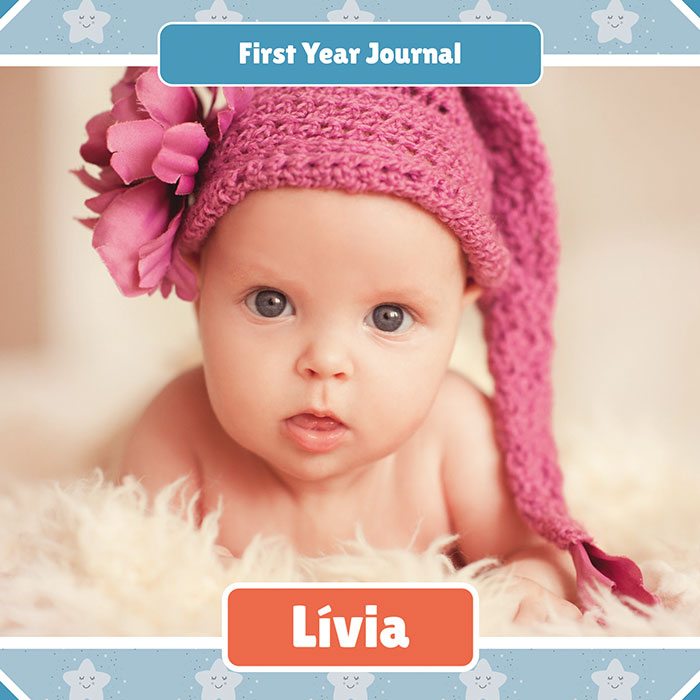Easily create your
First Year Journal.
gfJ0YR91N80
To quickly and easily create your baby’s journal, it is recommended to have everything ready before starting to fill in the creation questionnaire. See below what is needed.
First of all, click the button below to see a First Year Journal template. With it you can see an example of a finished journal, in reduced quality for sample, which will help a lot during the creation of your baby’s journal.
Step by Step Summary:
See detailed step-by-step below.
Journal’s Photos
During the journal creation steps, you will need to insert the photos that will be in it. Follow the instructions for each step, which inform the type of photo that should be inserted and their recommendations. If you don’t have a photo that represents the requested type, you can insert another that you think is more appropriate.
For better display in the Journal, it is strongly recommended that the photos are horizontal, that is, they were taken in landscape mode (e.g. with the cell phone lying down). The only photo in the Journal where a vertical photo is recommended (portrait mode / “standing” cell phone) is for the Baby Profile, which can be seen in the Journal template.
Whenever you upload a photo, before proceeding to the next step, wait for each image to be sent, waiting for the loading bar to complete and disappear. After loading, click on the “pencil” icon to crop the photo into the appropriate format, selecting the desired area and clicking the Save button. You can also remove a photo by clicking the “X” icon.
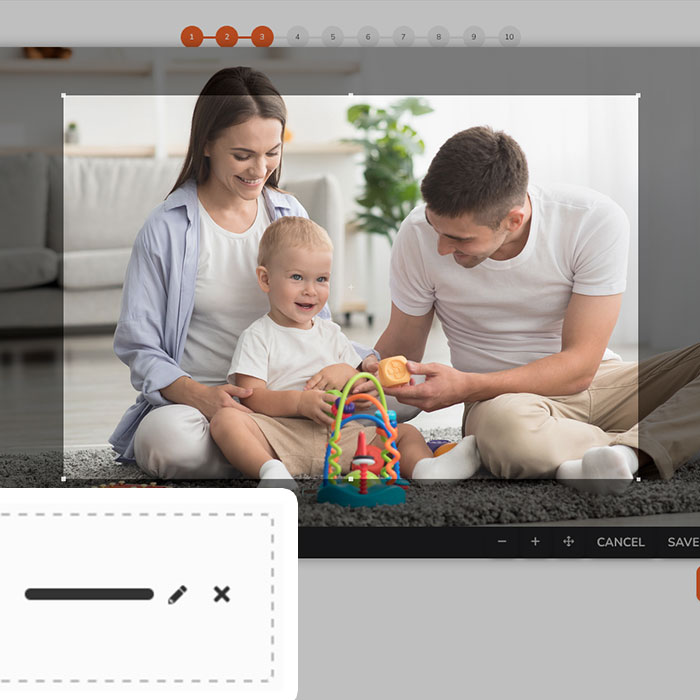
Photo Requirements
In addition to the recommendations above, photos must meet certain requirements to be used in the journal:
Allowed formats: jpg, jpeg, jpe, png, webp
Maximum size: 10 MB (10,000 KB)
Minimum dimensions (landscape): 1500 x 1060 px
Minimum dimensions (portrait): 1060 x 1500 px
If the image does not meet the above requirements, it will not be accepted. For example, if you try to use an image in another format (e.g. heic, pdf, etc.), or it is more than 10 MB, or smaller than the minimum dimensions (e.g.: 800×600, etc.), it will be rejected.
To check in advance whether your photos meet these requirements, you must check the device where they are located. The way to see these details varies from device to device, but generally the procedure is similar. For example, looking at the image application you have on your cell phone, when selecting a photo, there should be a Details option. It will show information on format, size and dimensions (length x height), as shown in the following image.
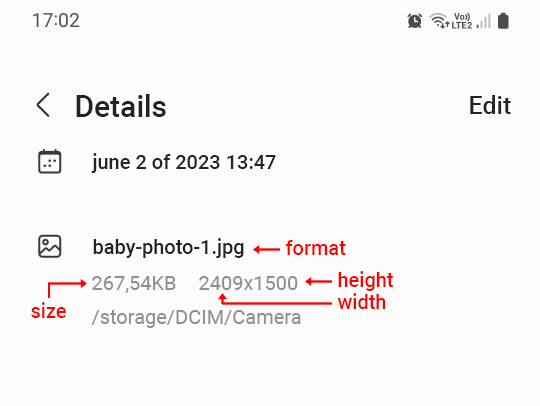
Photo Organization Template
To make it easier to select the photos that will be added to the Journal, we suggest separating them into folders on the device (computer or smartphone) that will be used to create the Journal. By making this separation, creating the Journal will be very simple!
Find out how to choose the best photos for each folder in this step-by-step sequence, also considering the requirements mentioned above.
In the end, the folders will be as shown in the structure below.
Creation Steps
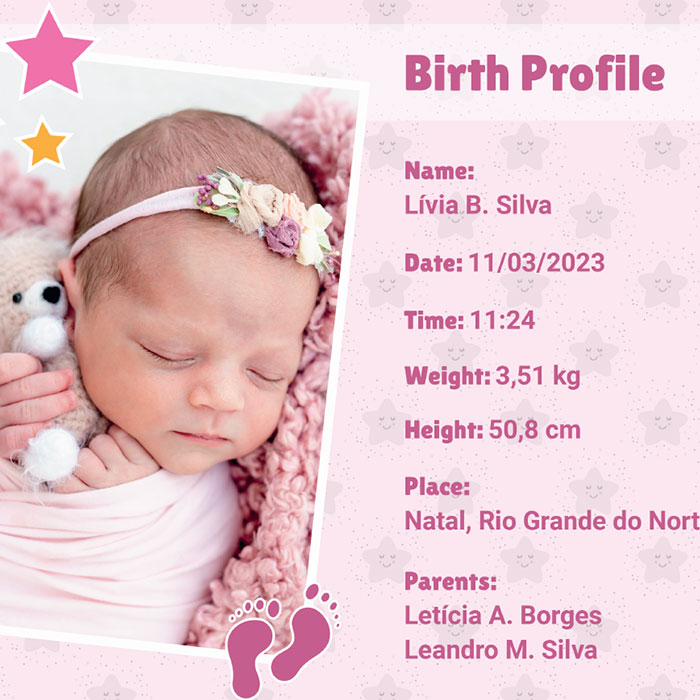
1
Baby’s Data
To start creating the journal, create and access your account on the website. Then go to the creation page.
In the first step of creation, enter your baby’s data as indicated in the form fields. If your baby has siblings, you can enter their names on the form, but it is not necessary as this information is not displayed in the First Year Journal. Pay attention to the character limit allowed in each field, and if necessary, abbreviate the names.
Once completed, click Next to proceed to the next step.
2
Cover, Profile and Parents Photos
Cover
Insert the best photo of your baby to be on the cover of the journal. It is suggested that only the baby appears in this photo.
Profile
Insert a photo containing just your baby. Here the ideal is to use a photo in vertical format, but if you don’t have one, you can insert any other and use the cropping tool by clicking on the “pencil” icon that will appear after loading the image.
Baby with Parents
Insert a photo of the baby with the parents.
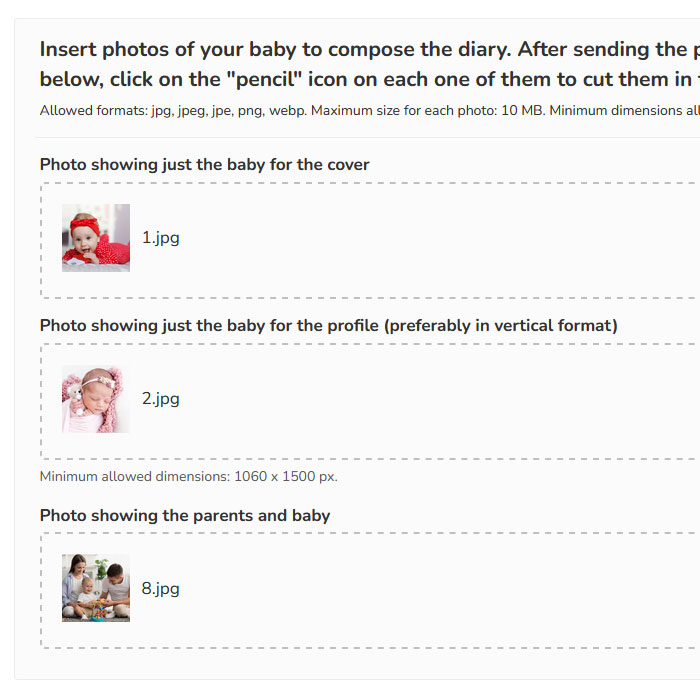
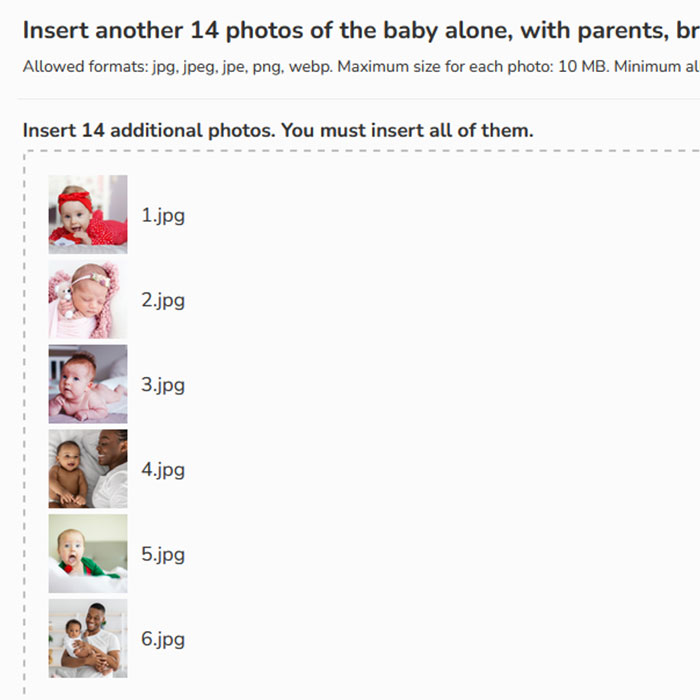
3
Additional Photos
In this step, you will need to insert 14 photos of the baby. It is mandatory to send exactly 14 photos in this area.
The photos can be of the baby alone, with parents, siblings, family or friends. These photos will be distributed throughout the journal in areas where it is not necessary for the photo to represent specific information.
4
Phases of Development
Then, after defining your baby’s age (up to 6 months or more than 6 months), you will have to choose 6 characteristics that best represent him in each phase of his development.
In addition, you must also send, for each phase, 3 photos of the baby that best demonstrate the chosen characteristics. If you don’t have photos that represent them, you can choose other photos that you think are more appropriate.
Below, the phases of baby development and their most common characteristics. Get to know and find out which 6 characteristics most represent your baby at each phase. Knowing this, select the photos that will be used during the creation of the journal.
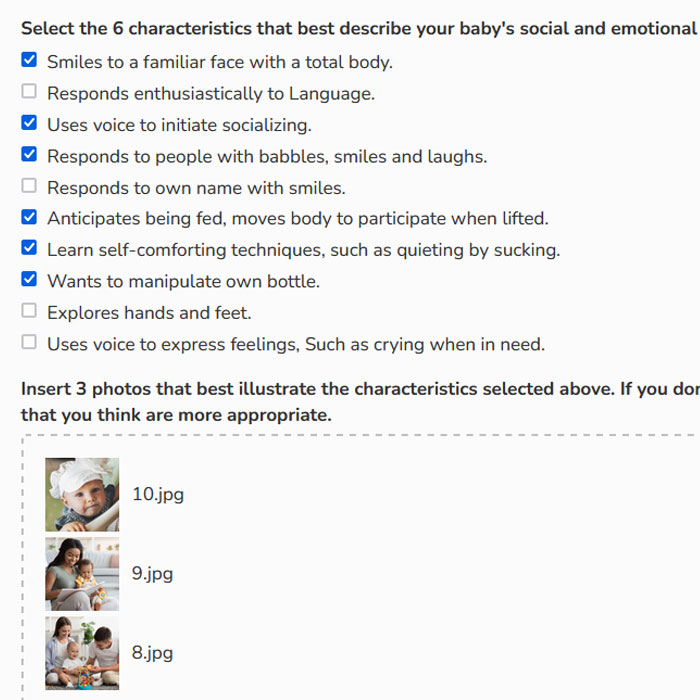

Social and Emotional Development
At this phase, the most important social task is the development of attachment to the main caregiver who, in most cases, is the child’s mother.
From birth and during the first years of life, the child develops his first social skill of trust, which is the relationship with the parents through the satisfaction of their basic needs, such as: changing diapers (when necessary), feeding (when are hungry) and comfort (when they cry). This relationship is fundamental in building the child’s social, emotional and personality development and, consequently, will define the child’s interaction with parents, with others and with the environment.
Your baby’s social and emotional development can be observed as he interacts with other babies and the environment (social), and expresses his emotions in situations of separation, transition, and frustration tolerance (emotional).

Motor Development
The baby moves all the time inside the mother’s womb. After birth, this process evolves in a chronological and gradual line as the baby grows, rolling over, sitting up, crawling, walking and running.
This development of control and dominion over his own body, both in gross and fine motor coordination, is a primary task for the baby during the first years of life.
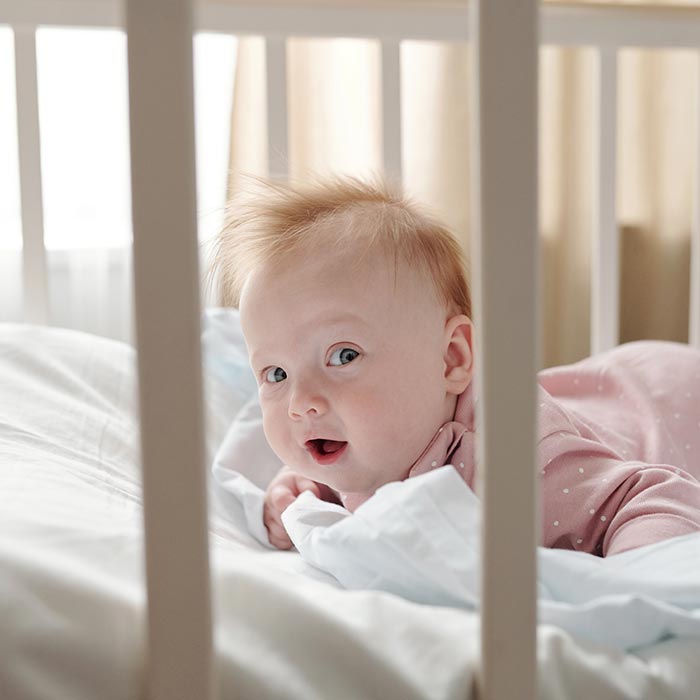
Cognitive Development
During the first year of life, babies explore the world through sound, sight and touch. So it’s possible for a baby to accidentally suck their thumb and find it pleasant. Then he can repeat the action, simply because he liked it.
In the first few months of life, babies cry when an object or person is removed from their sight. That’s because they don’t understand that the object/person continues to exist, even if he can’t see it. That’s why they cry when their parents leave for work, or when a toy gets out of their reach, for example.
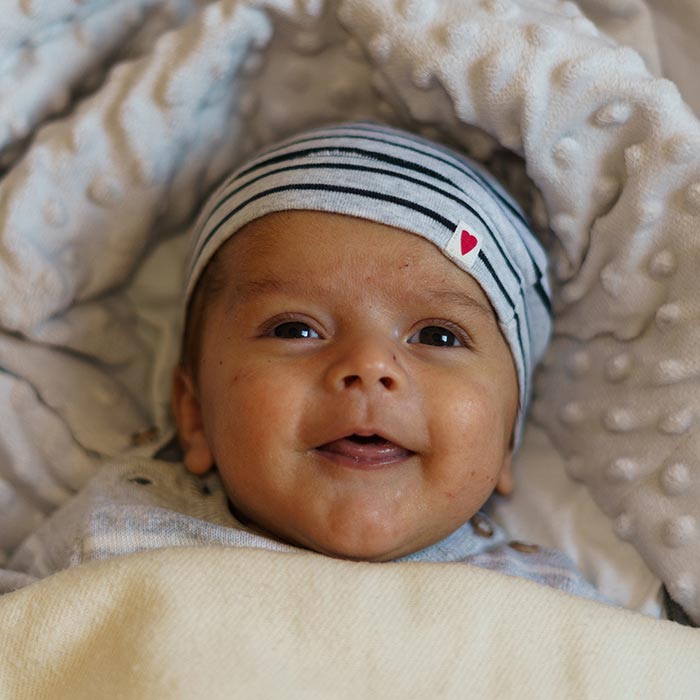
Language Development
At birth, the baby tends to be attracted to the sounds of the human voice, especially the mother’s voice.
In most babies, babbling starts between 3 and 6 months, usually in response to the sounds of the parents’ speech.
In general, the first real word is pronounced between 10 and 13 months, when most babies will learn to say “dada”, “mama”, “papa”.
Around 18 to 24 months, babies begin to speak two words together. When this happens, they quickly assimilate the importance of language in communication in satisfying their needs.
5
Make a Dedication
Near the end of the journal, there is a dedication area where you can dedicate the journal to an important relative or friend by entering a text and a photo, preferably of the dedicated person with the baby.
Pay attention to the maximum text size of characters and only 1 paragraph is allowed. Multiple paragraphs will be merged into a single one.
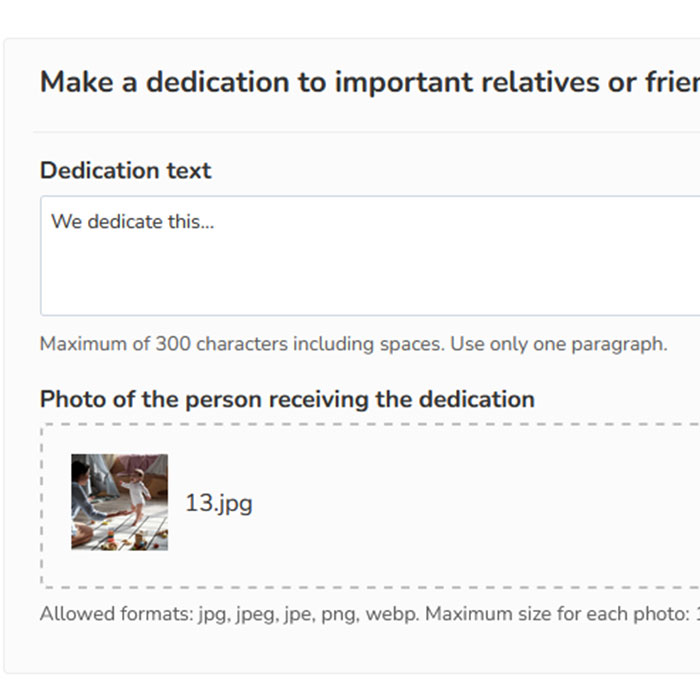

6
Payment
Enter buyer information and choose a payment method.
After completing the purchase and verifying the payment, you will receive (in the email you provided) confirmation and instructions on how to download your journal.
7
Ready. Download your Journal!
To download the journal, access your account on the website, click on Downloads and then on the Download button. Wait for the file to load completely and then download it to your device.
The journal will be available for download for up to 60 days. Download and store in a safe place. You can, for example, leave a copy on your device and another in a personal email. This way you will have multiple ways to view your journal in the future.
In addition to saving the digital version of your journal, you can also use the same file to make a print version. It is in A4 format, the most used paper format today.
